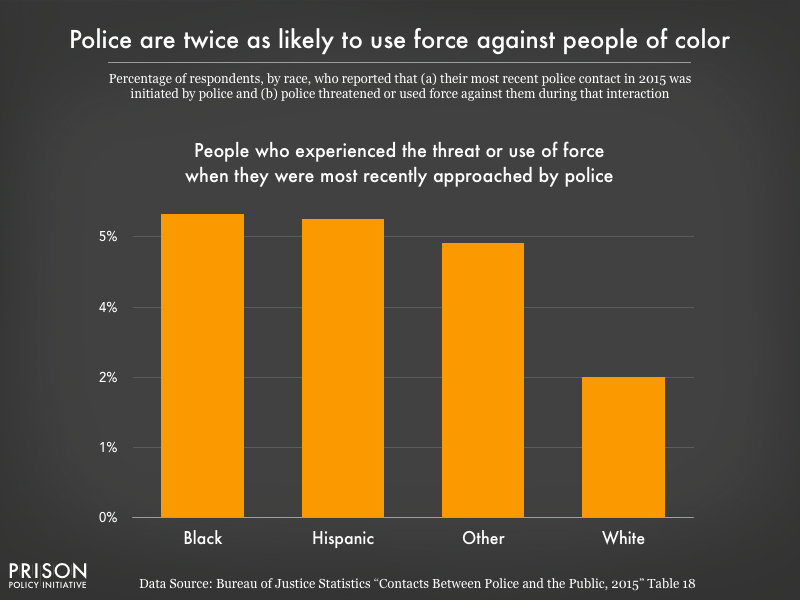Police stops are still marred by racial discrimination, new data shows.
So why does Trump continue to endorse stop-and-frisk?
by Alexi Jones, October 12, 2018
President Trump is again encouraging Chicago police to use stop-and-frisk – a policy that allows police officers to stop citizens for virtually any reason – even as new government data reminds us why such policies can be disastrous for people of color. Just days after Trump endorsed stop-and-frisk in Chicago, the Bureau of Justice Statistics released its new report on interactions between police and the public, using survey data from 2015. The report reminds us that police stops and use of force are already racially discriminatory, with predictable consequences for public trust of the police.
The report reveals:
- Black residents were more likely to be stopped by police than white or Hispanic residents, both in traffic stops and street stops.
- Black and Hispanic residents were also more likely to have multiple contacts with police than white residents, especially in the contexts of traffic and street stops. More than 1 in 6 Black residents who were pulled over in a traffic stop or stopped on the street had similar interactions with police multiple times over the course of the year.
- When police initiated an interaction, they were twice as likely to threaten or use force against Black and Hispanic residents than white residents.

These racial disparities in policing have predictable effects on public trust of the police:
- There were marked racial differences in perceptions of police behavior and legitimacy of police stops. Less than half of Black and Hispanic residents stopped on the street by police thought the stop was legitimate, while two-thirds of white residents did. And 60% of Black residents who experienced the threat or use of force perceived the force as excessive, compared to 43% of white residents who experienced force.
- White residents were more likely than Black, Hispanic, and residents of other races to initiate contact with police – for example to report a crime, a non-crime emergency, or to seek help for another reason. 46% of white residents who had contact with police initiated the contact, compared to less 37% of Black residents.
The report’s findings related to the use of force are particularly relevant to the national conversation about policing. The scale of police use of force alone is overwhelming. Nearly 1 million U.S. residents age 16 or older experienced the threat or use of force by police in 2015. And the people experiencing threats or use of force by police were disproportionately Black and Hispanic.
Previous local studies suggest that stop-and-frisk is particularly discriminatory. In 2010, near the peak of the city’s use of stop-and-frisk, Black residents in New York City were 8 times more likely to be stopped by the police than white residents and 11 times more likely to be frisked. And in 2011, New York City police reported using force in 23% of stops of Black and Latino residents, but in only 16% of stops of white residents.
Given these past and current policing disparities, it is not surprising that Black and Hispanic communities are less trusting of police. As the BJS report shows, Black and Hispanic people are less likely view the use of force as legitimate and less likely to seek help from police compared to white people. This is in line with Pew’s 2016 finding that only about a third of Black Americans believe that police treat racial and ethnic groups equally and that police in their community used the appropriate amount of force, compared to three-quarters of white Americans.
These disparities undermine the legitimacy of law enforcement and create a two-tiered policing system; moreover, they compromise public safety. If residents do not trust the police, they are less likely to report crimes and cooperate with police investigations. So despite what Trump says, stop-and-frisk remains as bad a policy as ever. Police should be looking to address these disparities, not implementing a policy that exacerbates them.




The problem I have with this is that the data is flawed in that it fails to report the p-value in any of the reports, meaning the data itself could be statistically insignificant given the variable element of probability of chance. Therefore, I find this entire piece to be intellectually dishonest.
https://www.bjs.gov/content/pub/pdf/cpp15.pdf Table 18: BJS notes that these differences from the comparison group are significant at the 95% confidence interval. (Appendix Table 20 reports standard errors for Table 18.)